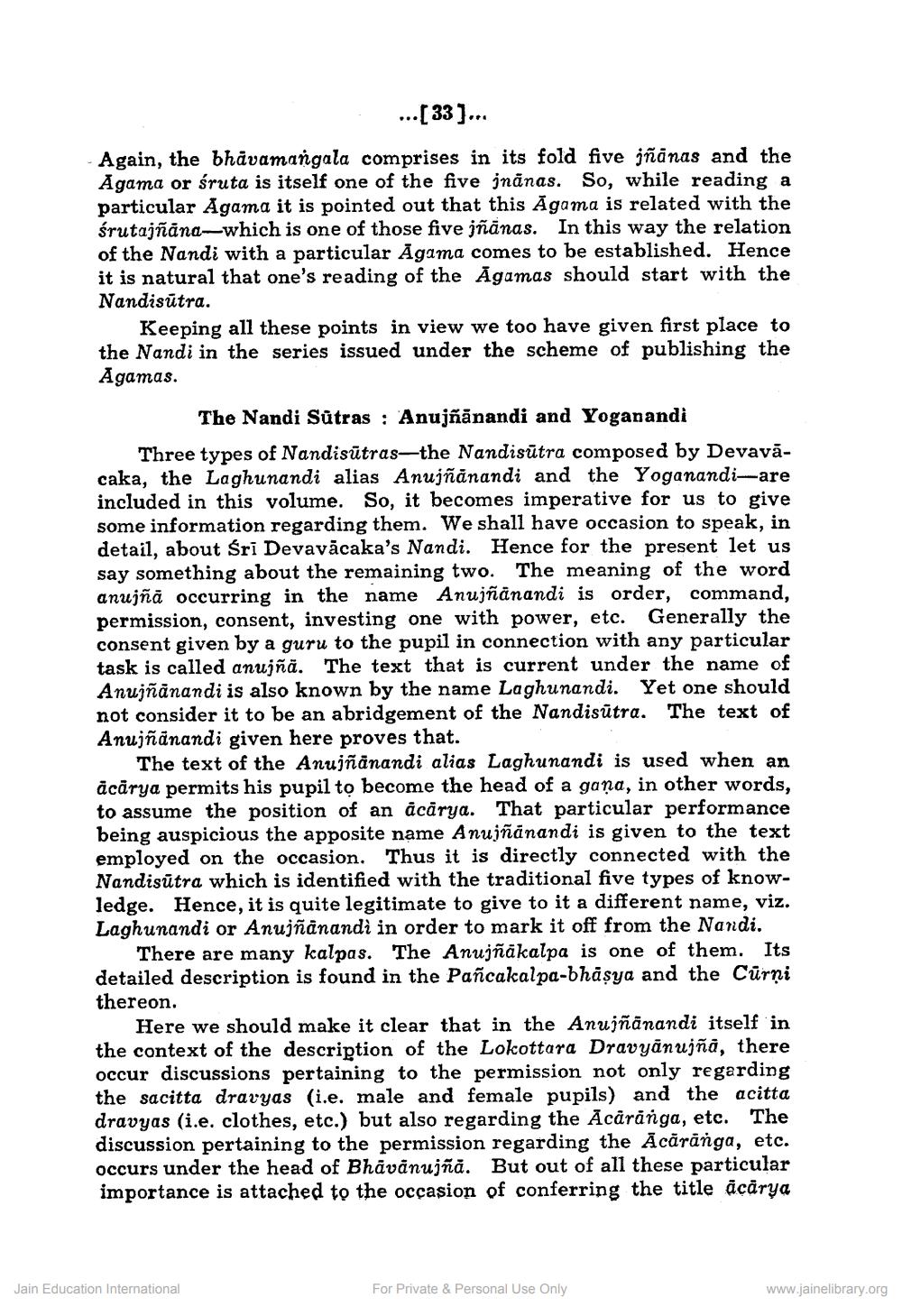________________
...[33]...
Again, the bhavamangala comprises in its fold five jñānas and the Agama or śruta is itself one of the five jnanas. So, while reading a particular Agama it is pointed out that this Agama is related with the śrutajñāna-which is one of those five jñānas. In this way the relation of the Nandi with a particular Agama comes to be established. Hence it is natural that one's reading of the Agamas should start with the Nandisutra.
Keeping all these points in view we too have given first place to the Nandi in the series issued under the scheme of publishing the Agamas.
The Nandi Sūtras: Anujñānandi and Yoganandi
Three types of Nandisutras-the Nandisutra composed by Devavācaka, the Laghunandi alias Anujñānandi and the Yoganandi-are included in this volume. So, it becomes imperative for us to give some information regarding them. We shall have occasion to speak, in detail, about Śri Devavācaka's Nandi. Hence for the present let us say something about the remaining two. The meaning of the word anujñā occurring in the name Anujñānandi is order, command, permission, consent, investing one with power, etc. Generally the consent given by a guru to the pupil in connection with any particular task is called anujña. The text that is current under the name of Anujñānandi is also known by the name Laghunandi. Yet one should not consider it to be an abridgement of the Nandisutra. The text of Anujñānandi given here proves that.
The text of the Anujñānandi alias Laghunandi is used when an ācārya permits his pupil to become the head of a gana, in other words, to assume the position of an acārya. That particular performance being auspicious the apposite name Anujñānandi is given to the text employed on the occasion. Thus it is directly connected with the Nandisutra which is identified with the traditional five types of knowledge. Hence, it is quite legitimate to give to it a different name, viz. Laghunandi or Anujñānandì in order to mark it off from the Nandi.
There are many kalpas. The Anujñakalpa is one of them. Its detailed description is found in the Pañcakalpa-bhāṣya and the Curni thereon.
Here we should make it clear that in the Anujñānandi itself in the context of the description of the Lokottara Dravyānujñā, there occur discussions pertaining to the permission not only regarding the sacitta dravyas (i.e. male and female pupils) and the acitta dravyas (i.e. clothes, etc.) but also regarding the Acaränga, etc. The discussion pertaining to the permission regarding the Acārānga, etc. occurs under the head of Bhāvānujñā. But out of all these particular importance is attached to the occasion of conferring the title ācārya
Jain Education International
For Private & Personal Use Only
www.jainelibrary.org




